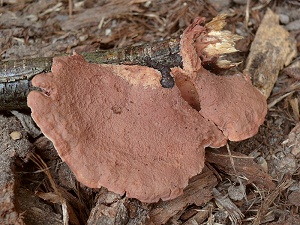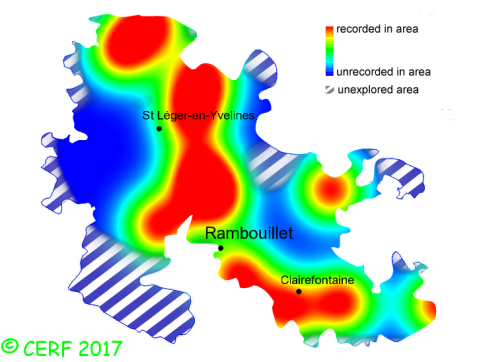| Hapalopilus nidulans (Fr.) P. Karst. |
|
|
|
|
|
|
The cap is cinnamon to pinkish brown or ochre-brown, soft, spongy and slightly tough, bracket- or fan-shaped, without stem and attached to it substrate on a large and thick section. The cap surface is downy to velvety-felty at first then smooth. The cap margin is acute, incurvate. The flesh is cinnamon to reddsih coloures, paler towards the outer skin; its taste is mild; the odour is faint, sweetish; The tubes are ochraceous to grey-brown,4 to 10 mm long. The pores are narrow (2-4 per mm), concolorous, round to angular. The spore print is white. It grows in broad-leaved woods, sometimes also in coniferous woods, mostly on beech and birch, occasionnaly also on fir, pine, spruce, mostly as a saprophyte but also sometimes as a parasite (white rot). The fruiting period takes place from June to December.
Chemical tests : flesh strongly reactiing purple to potash. Distinctive features : bracket-shaped, cinnamon-brown fruiting body, without stem; soft, slightly tough flesh; narrow tubes, pores concolorous to body; strong purple reaction of the flesh to potash; mostly of deciduous wood Hapalopilus nidulans is infrequent and scattered in the forest of Rambouillet, and is occasional, more generally speaking . | ||
|
page updated on 14/01/18

